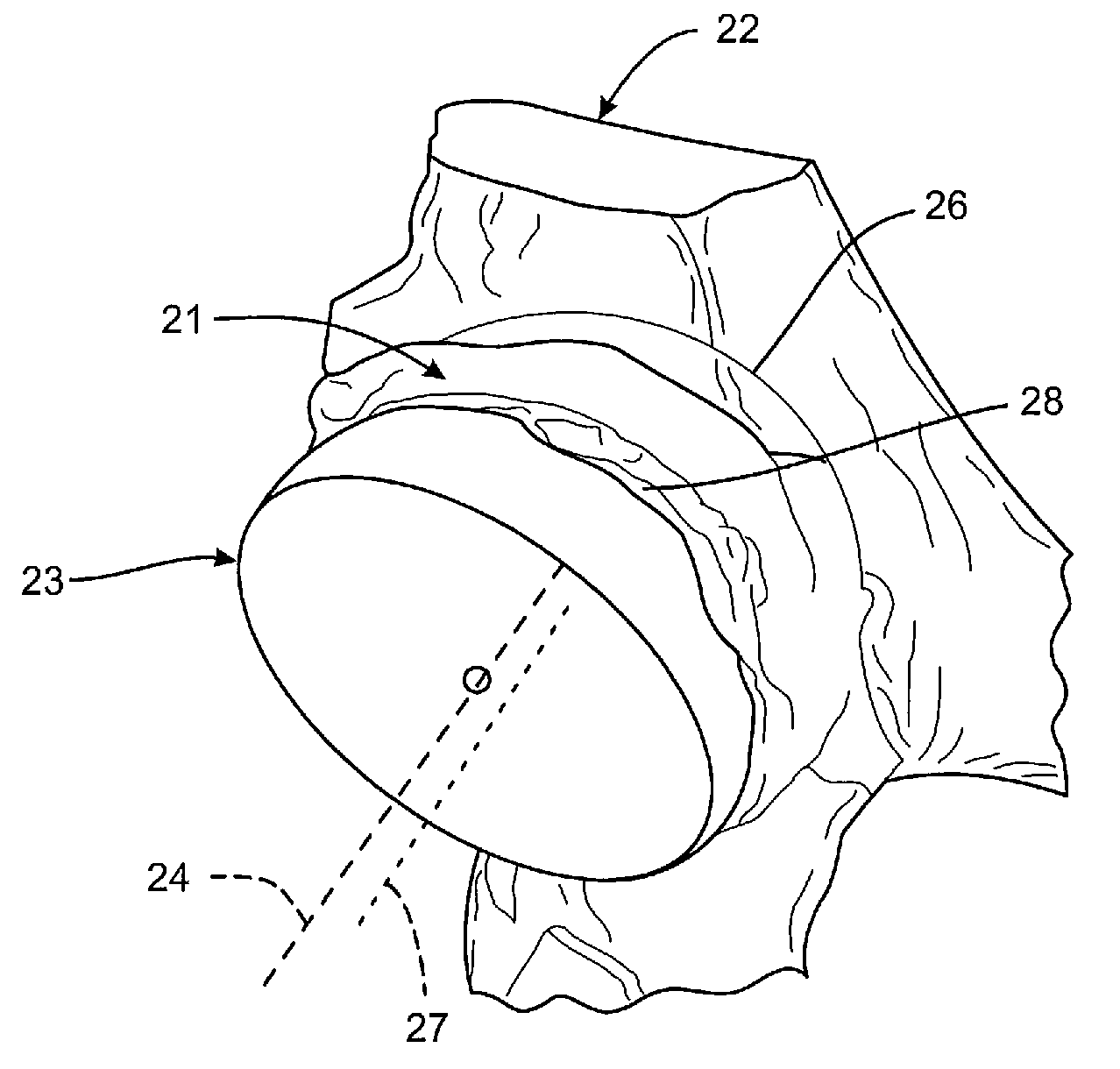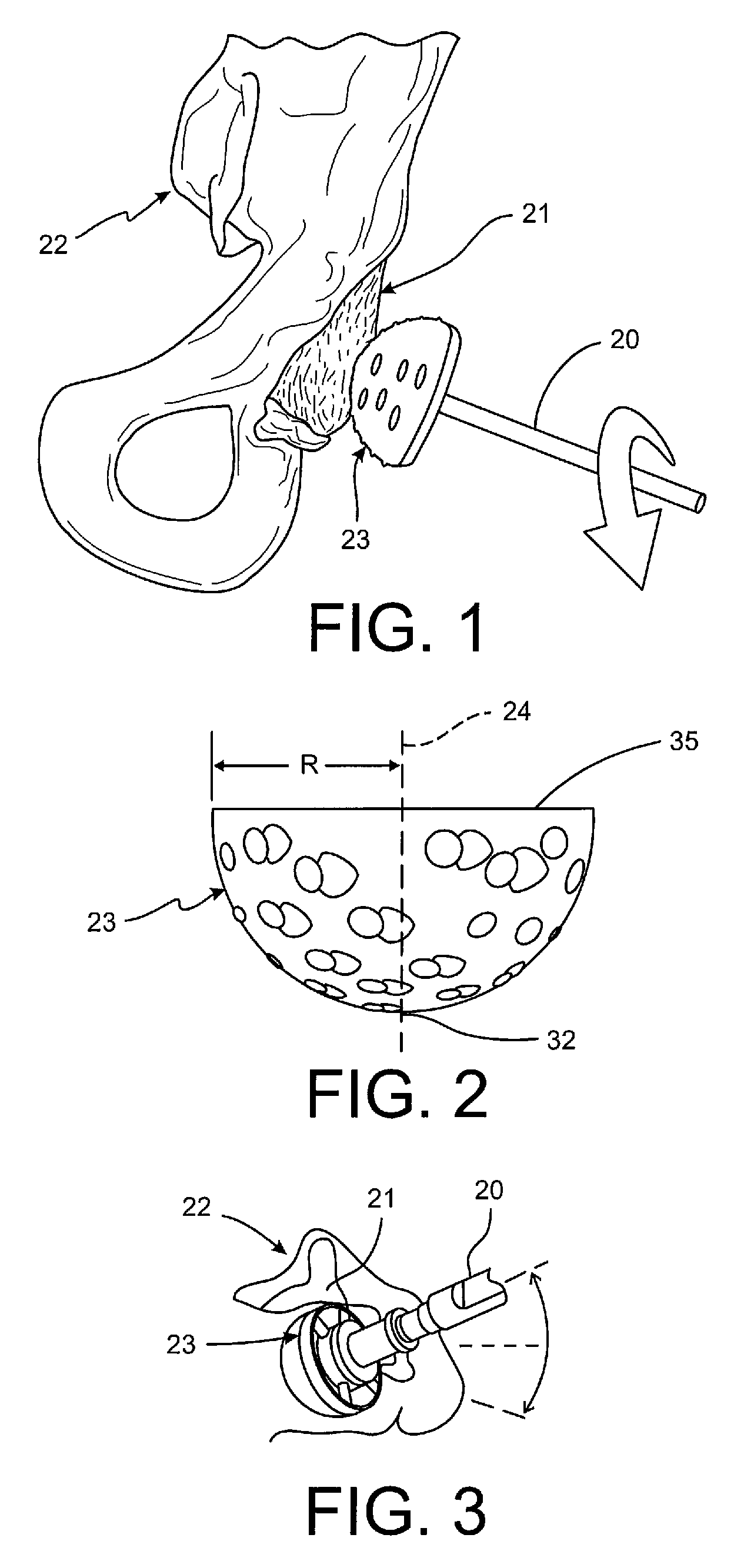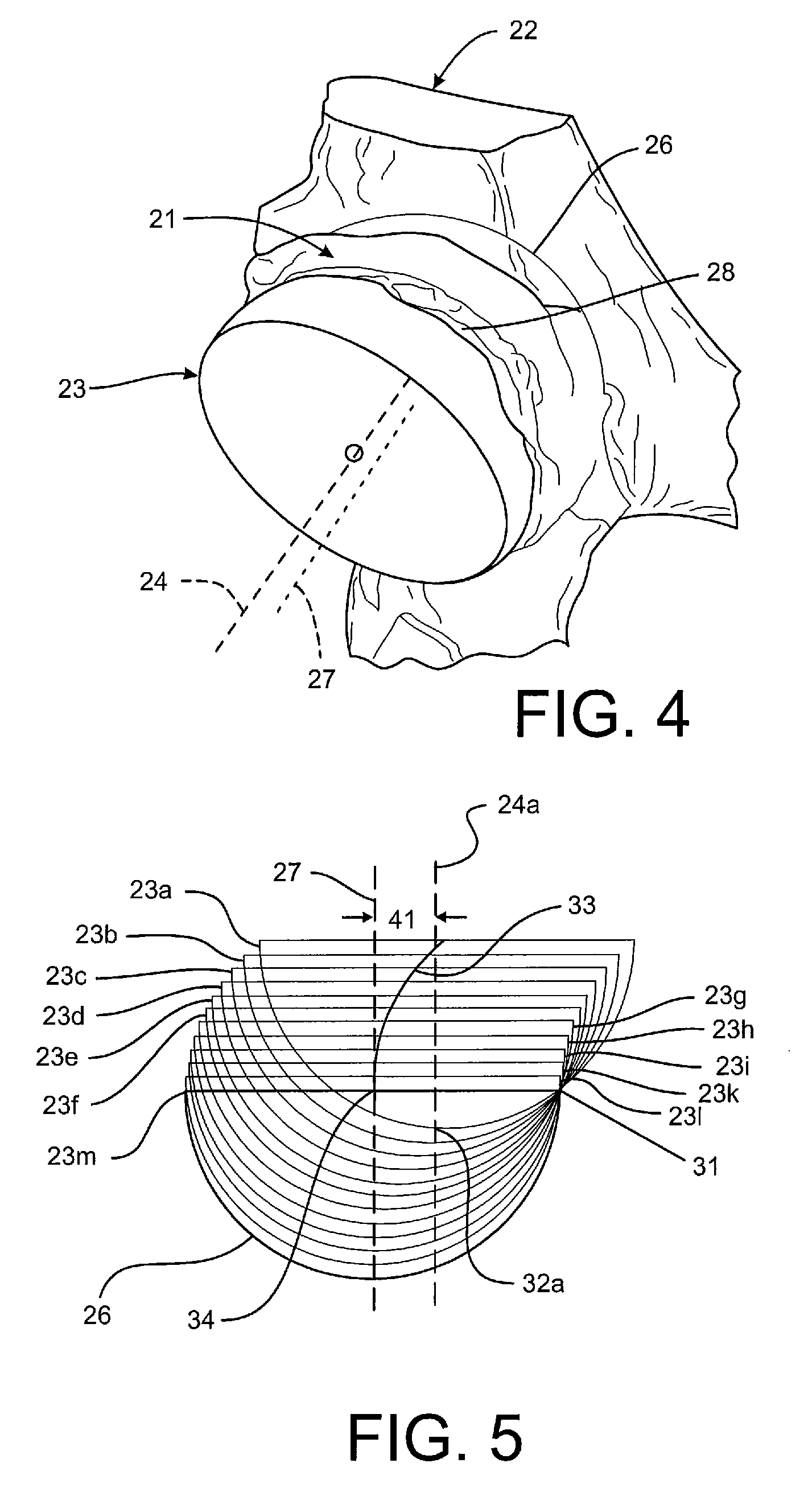Haptic volumes for reaming during arthroplasty
a robotic system and volume technology, applied in the field of robotic systems, can solve the problems of inconvenient reaming of arthroplasty volume, inability to adapt to the needs of a variety of tools, and inability to meet the needs of surgery, etc., and achieve the effect of reducing the difficulty of tha and other types of replacement surgery
- Summary
- Abstract
- Description
- Claims
- Application Information
AI Technical Summary
Benefits of technology
Problems solved by technology
Method used
Image
Examples
Embodiment Construction
[0033]Turning to FIG. 4, in order to accommodate single-stage reaming, the cutting tool 23 may be within the haptic constraint of the system (not shown in FIG. 4) even when the central axis 24 of the cutting tool 23 is not co-linear with the intended cup normal or central axis 25 of the intended indentation 26, yet not compromise the final location and shape of the indentation 26. Specifically, in FIG. 4, the cutting tool 23 has been placed against the acetabulum 21 but the surgeon is unable to position the cutting tool 23 so that its central axis 24 is co-linear with the intended tool path or the straight-line haptic path 27 because of interference between the cutting tool 23 and the acetabular rim 28. In other words, the architecture of the acetabulum 21 prevents the surgeon from placing the cutting tool 23 in an initial position that would allow a single-stage reaming process defined by the haptic path 27. Thus, prior to this disclosure, a multiple-stage reaming process would nee...
PUM
 Login to View More
Login to View More Abstract
Description
Claims
Application Information
 Login to View More
Login to View More - R&D
- Intellectual Property
- Life Sciences
- Materials
- Tech Scout
- Unparalleled Data Quality
- Higher Quality Content
- 60% Fewer Hallucinations
Browse by: Latest US Patents, China's latest patents, Technical Efficacy Thesaurus, Application Domain, Technology Topic, Popular Technical Reports.
© 2025 PatSnap. All rights reserved.Legal|Privacy policy|Modern Slavery Act Transparency Statement|Sitemap|About US| Contact US: help@patsnap.com



